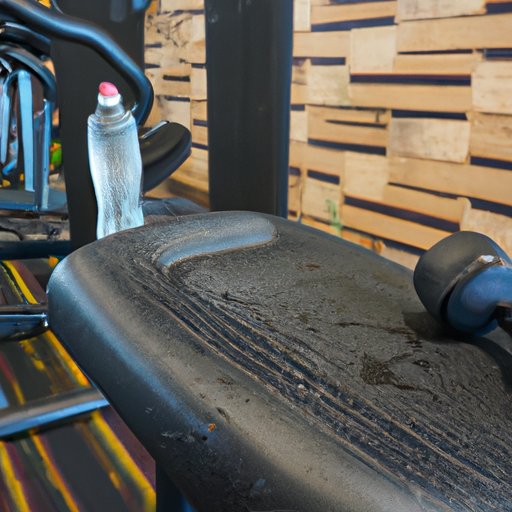
Introduction
Sweating has long been associated with weight loss and is often viewed as a sign of a good workout. However, does sweating really help you lose weight? In this article, we will explore the connection between sweating and weight loss, as well as provide practical tips for optimizing your workouts for maximum weight loss.
The Truth About Sweating and Weight Loss: Separating Fact from Fiction
While sweating can be an indication that your body is working hard, it is not necessarily an accurate predictor of weight loss. Sweat is primarily made up of water and electrolytes, and any weight lost through sweating is quickly regained once you rehydrate. However, sweating does play a role in weight loss by helping to regulate body temperature and reducing excess salt and water weight.
Many people believe that the more you sweat, the more calories you are burning. While it is true that sweating can be an indication of increased calorie burn, it is not a direct correlation. The number of calories burned during exercise is determined by several factors, including intensity, duration, and type of exercise.
Another common misconception is that sweating helps to rid the body of toxins. However, the liver and kidneys are primarily responsible for filtering toxins from the body, not sweat glands.
How to Optimize Your Workouts for Maximum Weight Loss through Sweat
If you are looking to use sweat to your advantage during exercise, there are a few strategies you can employ. Firstly, you should aim to exercise in a warm environment, as this will encourage your body to sweat more. This can be achieved by exercising outdoors in the sun, or by working out in a heated room.
Hydration is also important when it comes to sweating and weight loss. If you are dehydrated, your body will not be able to produce as much sweat. Therefore, you should aim to drink plenty of water before, during, and after exercise.
High-intensity interval training (HIIT) workouts are also effective at increasing sweat production and promoting weight loss. These workouts typically involve short bursts of high-intensity exercise followed by periods of rest. Examples of HIIT workouts include sprinting, jumping jacks, and burpees.
Sweating vs. Fat Burning: What’s the Difference?
Sweating and fat burning are two separate processes that contribute to weight loss. Fat burning occurs when your body breaks down fat stores and converts them into energy. This process is primarily influenced by the number of calories you are burning during exercise. On the other hand, sweating is a response to increased body temperature and is not directly related to calorie burn.
However, certain exercises can promote both sweating and fat burning, such as running, cycling, and swimming. These exercises require a lot of energy and can increase body temperature, which in turn encourages the body to sweat.
Can You Lose Weight Just By Sweating? Experts Weigh In
While sweating can contribute to weight loss, it is not a reliable method for sustained weight loss. According to Dr. Mark Hyman, director of the Cleveland Clinic’s Center for Functional Medicine, “Sweating itself doesn’t make you lose weight.” He goes on to explain that weight loss is primarily achieved through creating a caloric deficit through diet and exercise.
Nutritionist Bonnie Taub-Dix also emphasizes the importance of a balanced diet and exercise regimen when it comes to weight loss. She states, “While sweating can help shed some pounds initially, you still need to focus on diet and physical activity to keep that weight off.”
The Best Workouts for Sweating Off the Pounds
If you are looking for workouts that will get you sweating and burning calories, there are several options to choose from. High-intensity interval training (HIIT) workouts are one effective option, as they incorporate both cardio and strength training. Other options include jogging, cycling, and kickboxing.
It is important to note that some high-intensity workouts can be risky for those who are new to exercise or have health conditions. It is always best to consult with a medical professional before starting a new exercise regimen.
Conclusion
While sweating is often viewed as a sign of a good workout, it is not necessarily an indicator of weight loss. While sweating can contribute to weight loss, a balanced diet and regular exercise are the most effective methods for achieving sustained weight loss. By incorporating high-intensity workouts and staying hydrated, you can use sweat to your advantage during exercise and achieve your weight loss goals safely and effectively.
Remember to always consult with a qualified professional before starting a new exercise regimen or making changes to your diet.





